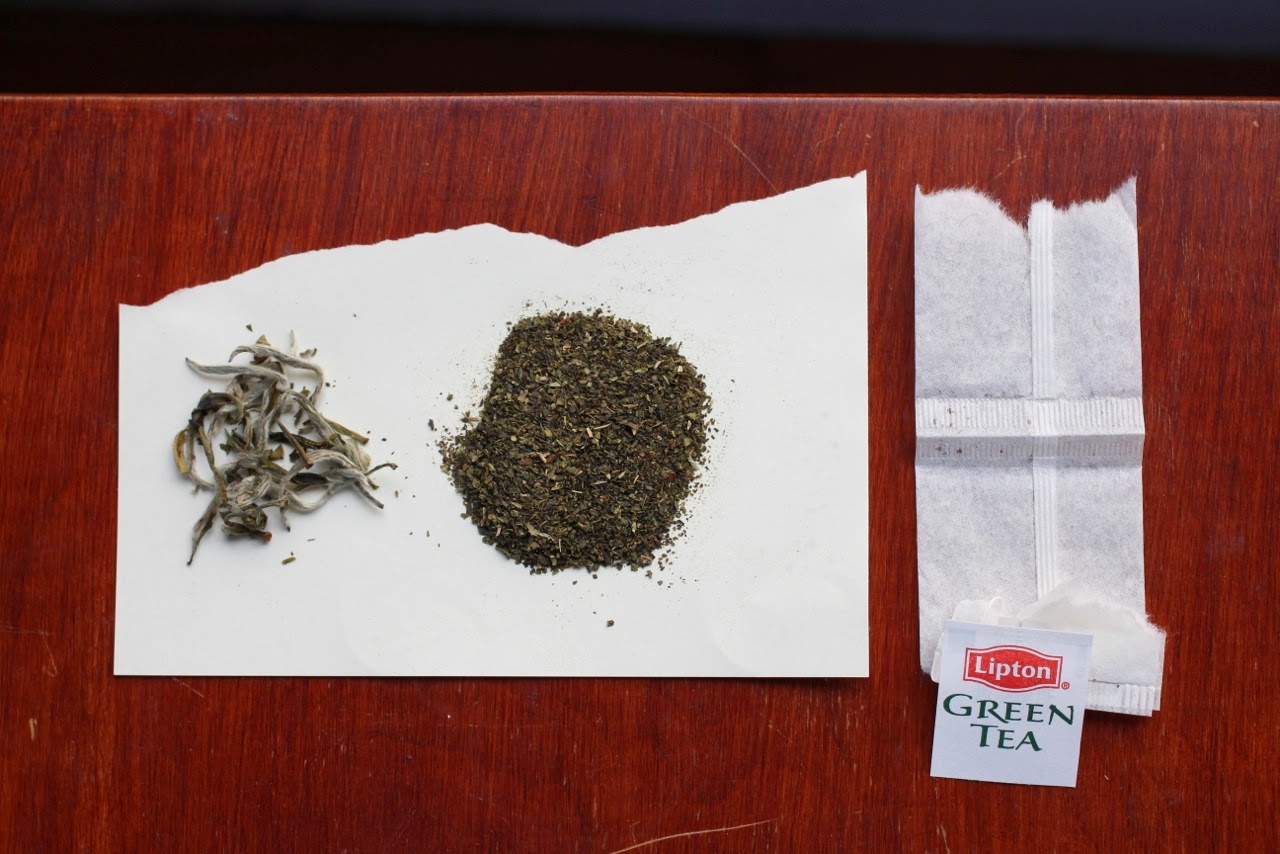I love tea and drink it everyday, but I've always been reluctant to buy and brew loose leaf tea regularly. Tea bags just seem so much easier and less expensive. My friend Michael Pieracci, whose love of tea puts mine to shame, has finally convinced me to make the switch to loose leaf. Michael is something of a tea expert- he travelled to India last year to work on a tea estate and is now hosting tea tastings while living in Berlin. He's here with a guest post today, to illustrate the basics of loose leaf tea and to show you how easy it can be to enjoy.
Read on for his tips:
Read on for his tips:
Buying loose leaf tea can seem overwhelming, expensive, and complicated, but it doesn't have to be. Tea bags are designed entirely for convenience, but they actually taste really bad. Sadly, the contents of most tea bags is very poor quality tea, or basically dust. This is the case with common brands such as Lipton, Twinings, and Celestial Seasonings. The photo above shows the difference between loose leaf (left) and the dust contained inside a Lipton tea bag (right).
You have the power to buy better tea. The points below will get you started. If your interest picks up your natural curiosity will take you forward to a whole new world.
Color, aroma, and taste vary greatly from cheap tea bags (left) to loose leaf (right). Mass produced tea bags have a darker color, stale flavor, flat aroma, and look dusty when brewed. It is possible to find tea bags that contain real, whole leaves of a good quality tea. Mighty Leaf (center) is a prime example.
Bagged tea is very cheap but loose tea can actually be very close in price. In the photo above, the small pile on the left shows the actual amount of tea contained in a box of 20 Chamomile tea bags. The amount you would spend on 20 bags of Chamomile will buy you an huge amount of aromatic, whole chamomile flowers. And the brew tastes great.
Not to mention the amount of waste generated by tea bags and all their packaging. The pile on the left is the amount of waste generated from 20 Twinings Chamomile tea bags and wrappers. Cost is $3.99. On the right is the amount of Chamomile you can buy for $3.99 at Rainbow Grocery in San Francisco. You can make well over 20 cups with this. The only waste is the reusable plastic bag.
Anything with loose leaf is greatly improved experience, even if it's a cheap loose leaf tea. The easiest and most forgotten way to brew tea is to put about a teaspoon of loose leaves in a glass and fill it with water. Loose leaves generally sink to the bottom after they steep, but you may need to give them a stir to encourage them downward. Or strain the tea if you wish to avoid leaves touching your lips.
The tea will taste much better. You’ll get to see leaves open up and dance around. Drink, and refill.
If you're worried about bitterness, use less tea and a slightly cooler water.
Speaking of temperature, people spend a lot of time worrying about proper temperature. Here's a good trick: the darker the leaf color the hotter the water can be. Think the darkness of black tea versus the green of white and green teas. The safest thing to do: boil the water and let sit for a few minutes before pouring over your tea. If you spend too much time worrying about temperature you'll waste time when you could be enjoying a cup of tea.
Thank you Michael! If you'd like to learn more, check out his Tumblr: This is Tea and This is Not Tea. Check back here Friday for Michael's tips on buying loose tea.
[All photos by Michael Pieracci]







No comments:
Post a Comment